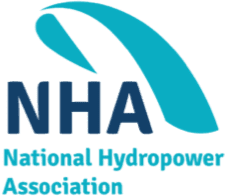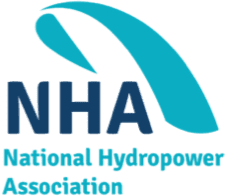- Show all
- Asset Management
- Buoy
- Canal
- Climate Change
- Controls
- Dam Safety
- Environmental Impact
- Fish and Aquatic Resources
- Future Grid
- Generator
- Governor
- Hydraulic Forecasting
- Hydraulic Optimization
- Hydrokinetic
- Intake Gates
- Markets
- Penstock
- Regulatory Process
- Renewable Integration
- Sediment Transport
- Shoreline and Riparian Resources
- Spillgates
- Tidal
- Transmission Services
- Turbine
- Water Management
- Water Resources
- Water Systems
- Wave
Conventional Hydro
Assessing potential future changes in atmospheric rivers over the western coast of the U.S
Lead Companies
Bureau of Reclamation
Lead Researcher (s)
- Michael Wright
Do dynamically downscaled, higher-resolution regional climate model simulations from the North American Coordinated Regional Climate Downscaling Experiment (NA-CORDEX) offer clear, stakeholder-relevant benefit to the understanding of current causes and future projections of precipitation amount, type, and distribution for the Western United States? The proposed research would reduce uncertainty in regional climate projections, particularly with regard to downscaling (7.02). In short, the proposed research offers insight into issue after issue which has been identified as a "gap" impeding effective utilization of temperature and precipitation projections by water resource managers.
Technology Application
Conventional Hydro
Research Category
Environmental and Sustainability
Research Sub-Category
Water Resources
Status
ongoing
Completion Date
2020
Conventional Hydro
Assessing the impact of physically realized hydro-climate extremes on water supply
Lead Companies
Bureau of Reclamation
Lead Researcher (s)
- Marketa McGuire
This scoping proposal seeks to develop a detailed collaborative experiment to advance our understanding of the impacts of extreme hydro-climate events on water management of Reclamation's reservoirs. A particular focus will be the roles of climate variability versus long-term trends in producing extreme events. We plan to leverage the joint expertise/interests at the University of Colorado at Boulder (CU), the National Center for Atmospheric Research (NCAR), the U.S. Bureau of Reclamation (Reclamation), and possibly elsewhere, to investigate atmospheric/climate drivers of hydrologic and land surface processes during drought periods and/or wet (i.e. pluvial) periods to understand the likelihood of acute or prolonged extremes.
Technology Application
Conventional Hydro
Research Category
Environmental and Sustainability
Research Sub-Category
Water Resources
Status
ongoing
Completion Date
2021
Conventional Hydro
Autonomous acoustic receiver system for 3D tracking and monitoring real-time fish survival
Lead Companies
PNNL
Lead Researcher (s)
- Jayson Martinez
This project is developing two technologies related to JSATS autonomous acoustic receivers: 1) a system which can be used to estimate fish survival in near real-time for optimizing hydropower operations, hereafter referred to as the Real-time Autonomous Acoustic Detection System (RAADS); 2) an advanced machine learning based 3D acoustic-tagged fish tracking system, hereafter referred to as the Machine Learning Autonomous Tracking System (MLATS).RAADS will allow detection information from acoustic-tagged fish to be broadcast from underwater autonomous acoustic receivers to a surface-based receiver that would then transmit the data to an offsite location. This will generate timely information that can be input into models that would allow metrics of fish survival and behavior to be calculated and displayed on a dashboard.
Technology Application
Conventional Hydro
Research Category
Environmental and Sustainability
Research Sub-Category
Fish and Aquatic Resources
Status
ongoing
Completion Date
TBD
Conventional Hydro
Baseline sediment budget for the Klamath River
Lead Companies
U.S. Geological Survey
Lead Researcher (s)
- Chauncey Anderson (ORWSC)
- Scott Wright (CAWSC)
USGS is working with PacifiCorp, Klamath River Renewal Corporation (KRRC), Tribes, States of OR and CA, and others to understand the effects of the Klamath Hydroelectric Project (KHP) on sediment transport and water quality in the Klamath River. In anticipation of a the potential removal of the lowermost 4 dams of the KHP, the USGS is working with the Tribes to help conduct monitoring required of KRRC under the Section 401 permits for the dam removal, currently scheduled for 2023, and at a larger scale to generate a baseline sediment budget for the river. Similar work is anticipated during and after the drawdown and dam removal process. Sub-studies, such as evaluating the bed mobility and effects of reservoir flushing on sediment resuspension, with application to mitigation of fish disease, are also ongoing. The study uses a mix of sediment flux, geomorphic assessments, and sediment tracer effects to estimate the overall effects of sediment releases from the reservoirs on downstream processes and place it in context with historical sediment transport in the basin.
Technology Application
Conventional Hydro
Research Category
Environmental and Sustainability
Research Sub-Category
Sediment Transport
Status
ongoing
Completion Date
TBD
Conventional Hydro
Benchmarking of Ensemble Streamflow Forecast Usage in Hydropower Planning
Lead Companies
CEATI International
Lead Researcher (s)
- #0429
This study includes three main components: a literature review of the use of streamflow ensembles; industry level surveys and interviews to benchmark the current use of ensembles; and an interactive Roadmap to guide users through the many different components of developing, verifying, processing, and using ensemble data.
Technology Application
Conventional Hydro
Research Category
Interconnect Integration and Markets
Research Sub-Category
Hydraulic Forecasting
Status
complete
Completion Date
2020
Conventional Hydro
Best Practice Guide for Maintaining Hydro Generating Station Power System Electrical Connections
Lead Companies
CEATI International
Lead Researcher (s)
- 03/101
A technical report that integrates the best available information and practices into a single source that can be used to understand the design and installation principles of PSE connections while providing guidance for maintenance and repair practices. A technical how-to user manual to help field personnel properly install and maintain PSE connections.
Technology Application
Conventional Hydro
Research Category
Powerhouse Equipment
Research Sub-Category
Status
ongoing
Completion Date
Expected 2020
Conventional Hydro
Best Practice Guide for the Operation and Maintenance of Cranes and Lifting Equipment
Lead Companies
CEATI International
Lead Researcher (s)
- #0397
This guide focuses on the entire life-cycle of crane and hoist assets, incorporating best practices obtained from survey responses from a cross section of participating HPLIG utilities that operate and maintain a combined total of 4500 cranes and hoists.
Technology Application
Conventional Hydro
Research Category
Powerhouse Equipment
Research Sub-Category
Status
complete
Completion Date
2020
Conventional Hydro
Best Practices for Mussel Control and Mitigation at Hydropower and Water Delivery Facilities
Lead Companies
Bureau of Reclamation
Lead Researcher (s)
- Sherri Pucherelli
The goal of this research is to compile currently used technology and techniques for the control of invasive mussels at hydropower and water delivery facilities. The approach involves case studies across multiple agencies to identify effective technologies and strategies that have been used in order to share this information with Federal and State agencies as well as impacted stakeholders. This effort will provide facility managers with information and options to be used for planning purposes in the case that invasive mussels are detected at their facility. Mussel control and mitigation techniques are site specific and dependent upon facility design and operation, and a survey of a variety of impacted facilities across the United States may uncover techniques that can be implemented at a diverse range of Reclamation facilities.
Technology Application
Conventional Hydro
Research Category
Environmental and Sustainability
Research Sub-Category
Fish and Aquatic Resources
Status
ongoing
Completion Date
2020
Conventional Hydro
Best Practices in the Design, Operation, and Maintenance of Spillway Gates in Northern Climates
Lead Companies
CEATI International
Lead Researcher (s)
- #0396
The report identifies the various ice mitifation measures that are currently available for three types of gates: radial, vertical lift and flap gates.
Technology Application
Conventional Hydro
Research Category
Dam or Weir
Research Sub-Category
Spillgates
Status
complete
Completion Date
2020
Don’t see your waterpower research?
Have questions about WaRP?
Contact Marla Barnes at: marla@hydro.org



